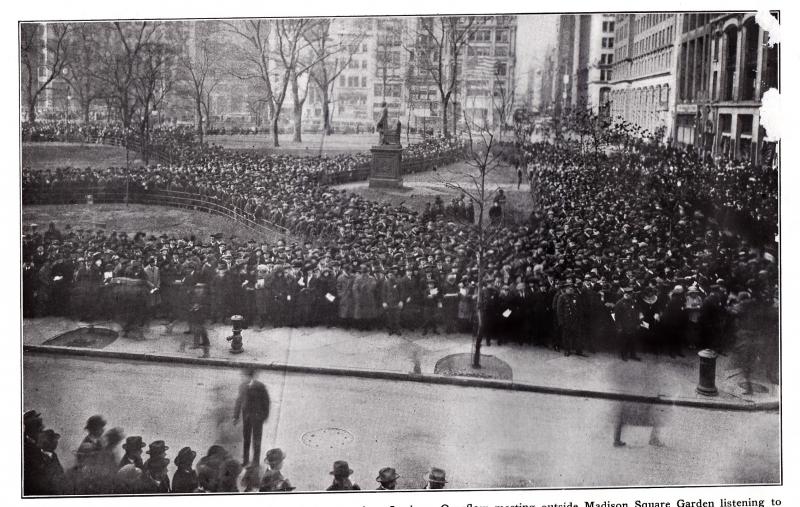
Large crowd gathers at noon for two minutes of silent prayer, Over 1,000 veterans, gold star mother, a large delegation of wounded and crippled soldiers, representatives of 300 American Legion posts, Veterans of the Grand Army of the Republic and other organizations and the general public took the 15,000 seats in Madison Square Garden long before the opening services, and a great crowd gathered in front of the Garden and Madison Square, listening to the address of President Warren G. Harding. The President speaking over the radio, from Arlington National Cemetery in Washington, D.C., he was officiating at the internment of the Unknown Soldier. Following a state funeral procession, down Pennsylvania Avenue from the U.S. Capitol building, where the remains had lain in state. The solemn ceremony was conducted on Armistice Day, November 11, 1921.
Giving the first invocation was Bishop Charles H. Brent, of the Episcopal Church,
from Buffalo, NY., who had marched in the parade, and had been the Senior Chaplain of American Forces in Europe. Bishop Brent was in attendance at the Paris Caucus of March 15-17, 1919 and seconded the motion for the adoption of the Constitution Committees report. He was so impressed with the report, that it was here that he rose and addressed the assembly with the offer to join with all the members of the “Comrades in Service” in the newly forming American Legion. This helped to create a vast network of members for The Legion. At the National Convention in 1967, the Bishop was awarded/granted the title of honorary Chaplain of The American Legion.
Also marching in the parade and attending the service at the cemetery, was Father Francis A. Kelly, of Cairo, New York. Father Kelly performed the Ritual of the Catholic Church at the ceremonies incident to the burial of the body of the Unknown Soldier. Father Kelly had been a Chaplain of the U.S. Army, 27th Division, during World War 1. He was elected the first Chaplain of The American Legion, at the 1st National Convention in Minneapolis in 1919.
On December 21, 1920, New York Congressman, Hamilton Fish introduced legislation, Resolution No. 67, of the 66th Congress, which provided for the return to the United States, the remains of an unknown soldier killed in France during World War 1. After having had served in the World War, Congressman fish was elected to serve from his home district of Putnam County, NY. He was re-elected many times. After 22 years in Congress, this is probably the Congressman’s greatest legacy to the nation . He died at his home in Garrison, NY., on January 18, 1991. He was 102 years old. You can view resume on this site.
(Photo, Department of New York).
